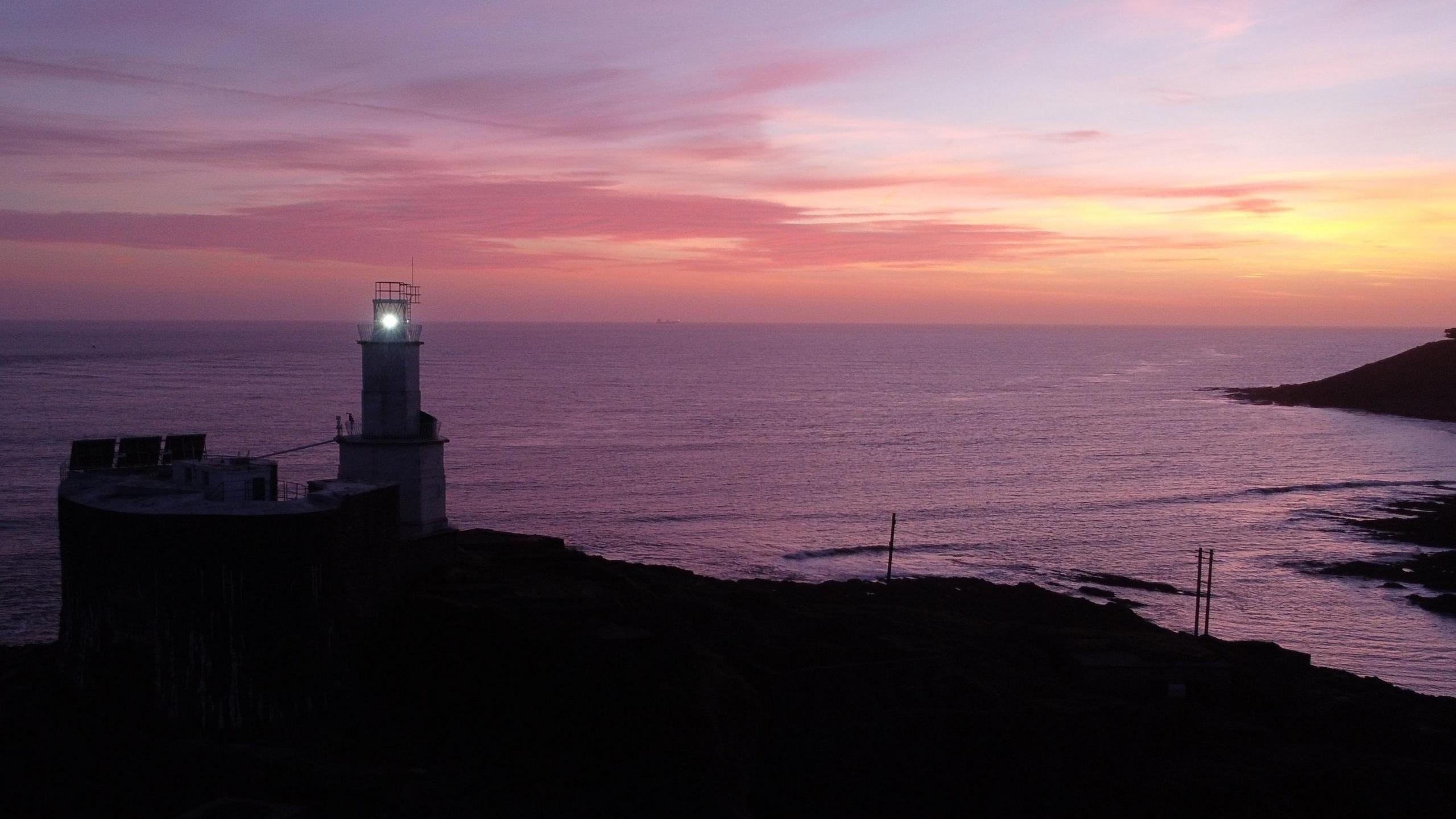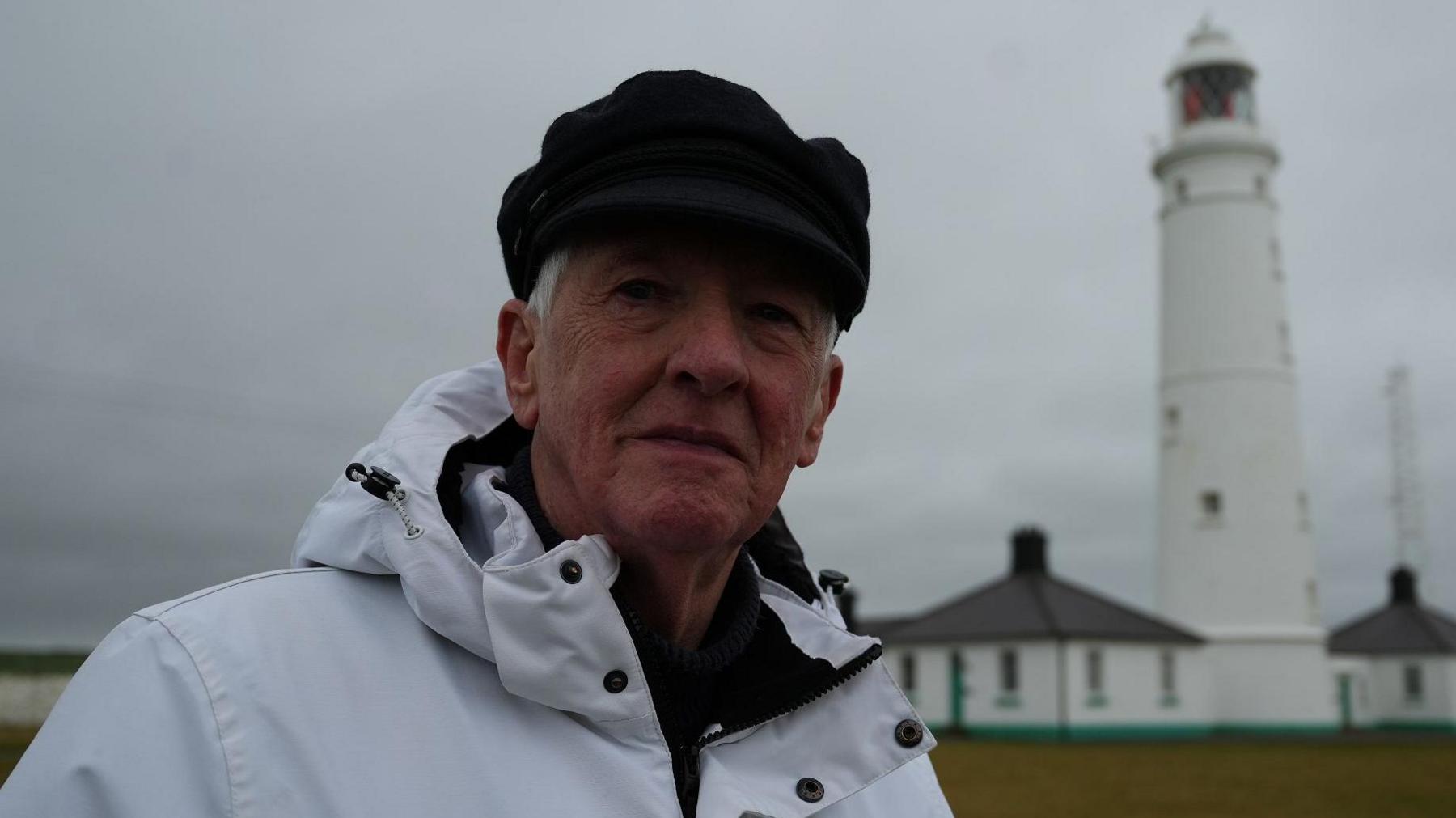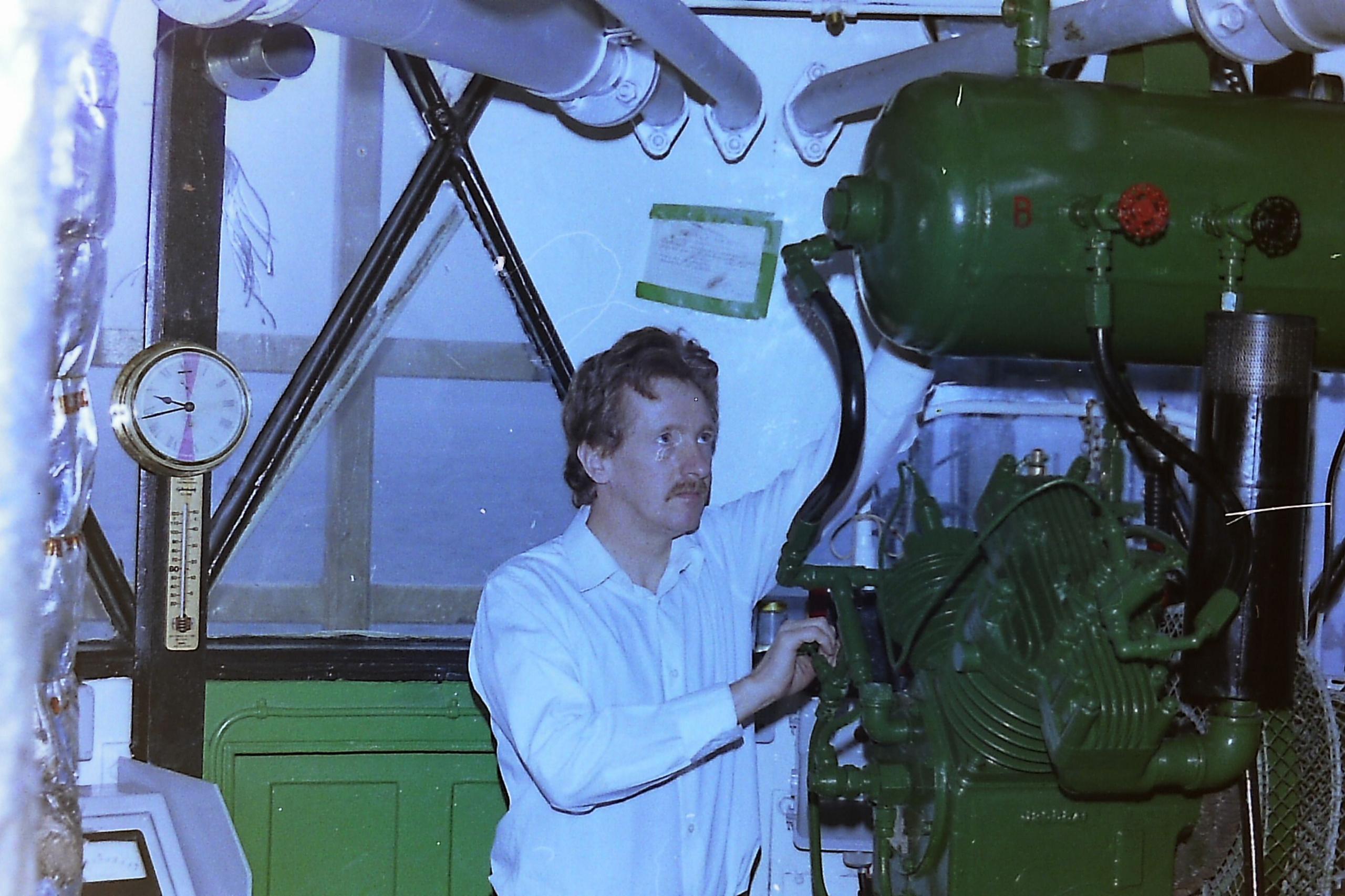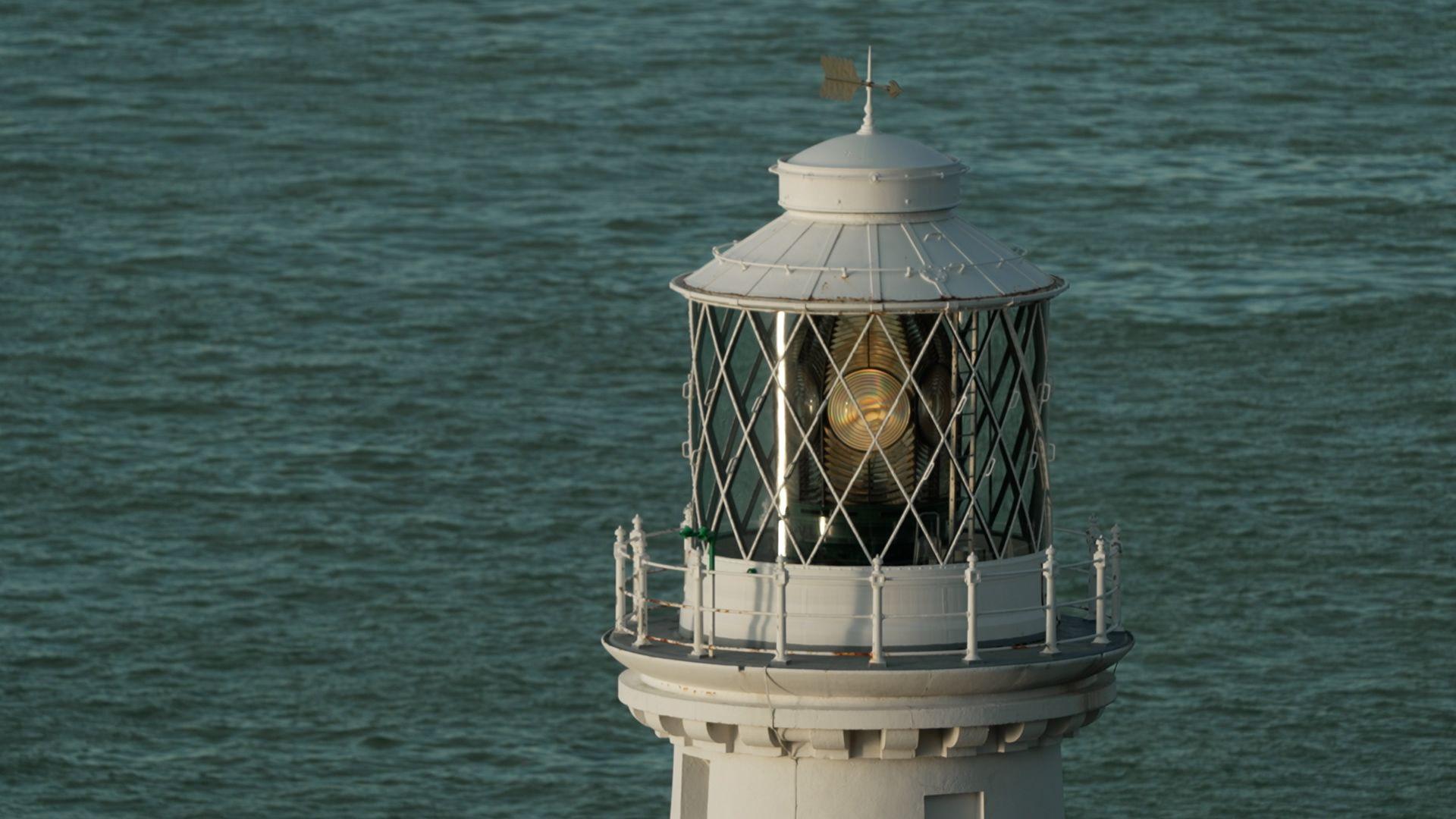Keeping the lights on for lighthouses

Mumbles lighthouse, where a new LED light has been introduced
- Published
They have guided ships in the sea and kept sailors safe for centuries.
But soon the iconic sweeping beams of lighthouses will become rarer as many are replaced by flashing LEDs.
Trinity House, which owns and manages more than 60 lighthouses in the UK, said it is making this change for efficiency and safety purposes.
It will happen over the next few years.

Former lighthouse keeper Neil Hargreaves at Nash Point
It is the latest change for the traditional structures, which have been a constant feature on our coastlines for centuries.
Automation during the 20th Century meant lighthouses became controlled remotely rather than being manned and managed by keepers.
Former lighthouse keeper Neil Hargreaves said: ‘"I must admit I’ll be sad to see the sweeping beams go.
"Our members who live near the coast as kids used to go to sleep watching the beams go round."
He said it is calming and "told you all is well with the world".
Stunning shot of polar bear drifting to sleep wins award
- Published7 February 2024
Two octopuses found walking on Welsh beach. Video, 00:02:18
- Published24 February 2022
Neil worked on a number of different lighthouses during his career as a keeper which spanned more than 16 years, adding: ‘’It was the best job I ever had.
‘’You saw nature in its rawest form, whether it be the weather or the wildlife.
"The sunsets and the sunrises were absolutely beautiful.’’
The job involved cleaning the engine room and the lens, washing the stairs and sending weather reports to the Met Office.’
His longest stint was the two years he spent on the Smalls lighthouse, 21 miles (33.79km) off St David’s Head, Pembrokeshire.
The notorious building is said to have inspired critically-acclaimed film the Lighthouse following the death of one of the two keepers.

Neil Hargreaves operating the fog engine at Longships lighthouse, 1987
Neil remembers it as isolated and basic, saying: "You didn't have a flushing toilet, it was what we call the bucket and chuck it.
"And you had to make sure which way the wind was blowing when you went out on the gallery to get rid of it."
There was one bedroom with the three keepers in bunkbeds.
But Neil said: "There was a great camaraderie. I mean, there had to be, you were in close confinement.’’
There were moments where the job could be frightening, as Neil said: ‘’I have seen waves going right over the top of the lighthouse and you’ve had a complete blackout momentarily.
‘’When a wave that size hits the side of the tower, you’ll feel it shudder.
"But they were designed to have that give by the engineers that built them back in the 1800s, and they still stand to this day.’’
'Safety and decarbonisation'
Trinity House runs the majority of working lighthouses in Wales and England.
Harbour authorities also operate some, and there are others which are privately owned.
A spokesperson for Trinity House said: ‘’As part of an ongoing process to modernise our lighthouses to provide the best service for safety, we are removing the very hazardous mercury which currently supports the rotating optics.
‘’This involves replacing the lamps with modern LED lights that require less power and as a result, support our decarbonisation plans by opening up opportunities to power lighthouses from solar.’’

The sweeping beam at South Stack lighthouse will be replaced in 2031
In an effort to keep the history of these important coastal structures in public memory, Neil started the Association of Lighthouse Keepers (ALK).
‘’It’s another profession that would’ve got lost otherwise," he said.
ALK has successfully built up an archive as well as opening a museum in Hurst Castle, Hampshire.

Bridget Box is chairwoman of the Flat Holm Society
Bridget Box volunteers, is also chairwoman of the Flat Holm Society and the south Wales representative for the Association of Lighthouse Keepers.
She said the most important thing is keeping lighthouses and their history alive.
‘’To the mariner it's still doing the same job, but there's less moving parts. So it’s much cheaper to run and that's important," she said.
‘’It's almost like a payoff. You keep the lighthouse, but we modernise it.
‘’It is absolutely important to keep the heritage. Lighthouses preserved lives, preserved the ships and they are very important to their communities.’’
For more on this story you can catch up on BBC Wales Live on BBC iPlayer